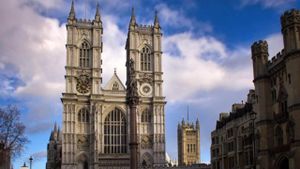Interest rates are like the weather; they can change unexpectedly, and whether you’re prepared or not can significantly impact your financial situation. For those scrambling to make their money grow amid shifting economic trends, high-yield savings accounts (HYSAS) and certificates of deposit (CDs) present enticing options. With the Federal Reserve recently adjusting its rates, consumers are keeping their eyes peeled for the best opportunities to secure solid returns before conditions change again.
High-yield savings accounts have recently gained attention, often yielding significantly higher returns compared to traditional savings accounts. The average yield is hovering around 5.10%, inviting many to reconsider their savings strategy. According to experts, these accounts not only offer higher interest rates but also provide liquidity, making it easy for account holders to access their funds. This flexibility is especially appealing to those who want to keep their savings accessible without sacrificing potential earnings.
On the other hand, certificates of deposit offer the allure of guaranteed returns. With rates currently at around 4.50% APY, many might think it’s too late to take advantage of such offers after the latest Federal Reserve rate cuts. But it turns out, it’s quite the opposite. By locking in these rates now, savers can protect themselves from future declines as additional cuts are expected. For those who can manage to set their funds aside for the full term of the CD, it’s like capturing today’s rates for the future, safeguarding against uncertainty.
One of the most appealing aspects of CDs is their fixed nature. Unlike variable-rate accounts, the interest rate on CDs does not change for the duration of the term. This means if you lock in at 4.50%, you won’t be vulnerable to the Fed’s changing rates or market fluctuations. The catch? You can’t access your money without penalty until the term concludes, which can last from one month to five years or more. This trade-off presents a strategic choice for those prioritizing guaranteed returns.
An increasing number of online banks and credit unions are stepping up to offer competitive rates and easy online signup experiences. Institutions like Barclays and the First National Bank of America have been proactive, making it simple for consumers to find accounts with low or no minimum deposit requirements. These banks are FDIC-insured, meaning your deposits remain safe, which can be particularly reassuring for those dipping their toes backoom for higher returns.
Moving forward, decisions made by the Federal Reserve will play a pivotal role. After several rate hikes aimed at combatting soaring inflation, the Fed began cutting rates again this fall. The latest cut, announced on November 7, lowered the federal funds target rate to between 4.50% and 4.75%. Economists speculate this is only the beginning; more cuts could come as inflation continues to stabilize and the economy seeks balance.
Experts keep their eyes peeled for various economic indicators leading up to Fed meetings, paying special attention to reported consumer and wholesale inflation numbers. The Fed's actions will directly influence high-yield savings and CD rates. With inflation tapering from its peak, the economic gestures from the Fed could either bolster or dampen confidence among savers and investors.
Notably, the consumer price index showed inflation cooling, displaying the lowest year-over-year increase since early 2021. This adds to the notion of stability as consumers evaluate their savings strategies. With more Americans growing wary about the future, higher-yield options provide viable avenues for protecting their financial futures.
Choosing between high-yield savings accounts and CDs often boils down to individual goals. For those who might need immediate access to cash, high-yield savings accounts represent an excellent option. They allow for ease of withdrawal whenever needed without compromising on growing your funds. But for those willing to commit their money for fixed terms, CDs present the opportunity for solid returns, protecting against future economic uncertainties.
One deciding factor for many people might be their financial goals. If it’s about saving for a future purchase or building up an emergency fund, the flexibility of HYSAS often wins out. Conversely, if the aim is to build wealth over time and weather financial storms without being swayed by quick changes, CDs might be the right way forward.
And it’s not just about choosing the right vehicle. It’s equally important to keep track of rates and stay updated on changes from the Federal Reserve, as these financial institutions are interconnected. Institutions track the key Fed rate, adjusting their offerings accordingly. So, savvy savers take the time to scour the market for the best options.
When evaluating your financial strategy, it’s beneficial to do your research, compare rates, and understand the nuances behind each savings method. After all, with inflation continuing to ease and the Fed proactively adjusting rates, now is the time for consumers to maximize their financial growth.
Annual percentage yields (APYs) might sound complex, but they simply represent how much money can grow over time through interest. It’s worth noting how different banks define their terms, which vary.n Some institutions may advertise enticing rates but have hidden fees or requirements, so being proactive means comparing not just the rates offered but also the terms and conditions of each account.
The gist of it all? High-yield savings accounts and CDs provide unique opportunities for anyone seeking to grow their cash safely. Both offer paths toward achieving financial stability and should be explored based on individual circumstances. Whether prioritizing liquidity or locking away savings for steady returns, the tools are there; it’s all about leveraging them correctly amid changing economic tides.



